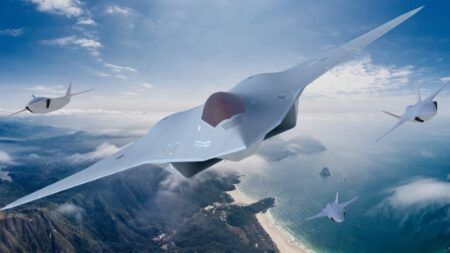Northrop Grumman’s Firebird optionally-manned autonomous aircraft has successfully completed a flight across several locations across the USA to demonstrate its capability of being piloted through manned airspace and then deployed autonomously for surveillance.
The Firebird is an ISR (intelligence surveillance reconnaissance) aircraft that can be flown either remotely, by a pilot or autonomously. The aircraft can operate for more than 30 hours at an altitude of 25,000ft.
Development of Firebird has been ongoing for more than a decade – the aircraft made its first flight in February 2010.
Northrup Grumman flew Firebird almost 9,000 miles (15,000km) around the USA with stops in Dayton, Ohio; Washington DC; Patuxent River, Maryland; as well as Tampa, Miami and Key West, Florida.
Jane Bishop, vice president and general manager of autonomous systems at Northrop Grumman said, “Our flights showcased one of its key differentiators – the ability to position the system in a manned configuration, then convert to autonomous operations for persistent ISR in under two hours.
“At each stop, plane-side briefings provided customers the opportunity to see first-hand the operational versatility of the platform, its large sensor bay, and rapid configurability for changing mission needs.”
Firebird is a medium altitude long endurance unmanned aircraft system (UAS) designed for flexibility and affordability. New payloads can be installed on the drone in as little as one day, and payloads can be swapped in 30 minutes making the system suitable for numerous domains and missions.
The flights concluded in Key West, Florida where the team conducted a series of manned maritime operational events that included a four-sensor package containing two high-definition EO/IR (electro-optical and infrared) sensors; a maritime configured multi-spectral sensor for small target detection; and an AIS receiver.




